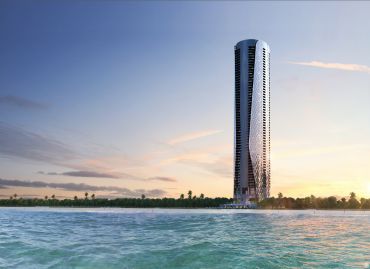Taking Stock of COVID-19’s Outsized Impact on Hotels and Malls: Trepp
By The Editors July 21, 2021 2:47 pm
reprints
“While there has been much discussion on the broad-ranging effect the coronavirus pandemic has had on global economies within such a short period, commercial real estate (CRE) market participants have been looking for meaningful data as a gauge of how much the pandemic had taken a toll on property financials in 2020,” wrote Catherine Liu, an associate manager at research firm Trepp.
“To assess the impact of the coronavirus pandemic on CRE property performance, Trepp examined servicer remittance on 13,215 commercial mortgage-backed securities (CMBS) loans for which fiscal year-end financials for both 2019 and 2020 were provided. Due to the time lag normally associated with the reporting of financial information in servicer data, the sample size analyzed amounts to more than 50 percent coverage of the outstanding private-label CMBS universe by loan count.
“Year-over-year 2020 percentages for each loan were calculated based on fiscal year net operating income (NOI), net cash flow (NCF), revenue, expense, and occupancy data, and measures were taken to remove loans with annual growth changes exceeding (+/-) 200 percent and to account for duplicate records of complex loan structures. Key financial metrics for the resulting sample set were then aggregated according to property type and subtype, U.S. region, the size of the metropolitan statistical area, and major city and state categories.
“Across the top five major property types and property subsectors, our findings on the magnitude of the impact of travel limitations, federally imposed business closures, and other social mitigation public health policies on CRE and CMBS in 2020 were generally in line with broader market expectations. On average, overall NOI, revenue, and occupancy behind CMBS loans contracted by 10.3 percent, 6.9 percent, and 5.3 percent, respectively, between 2019 and 2020.
Impact on the hardest-hit sectors
“Consistent with the narratives surrounding the outsized disruption the pandemic had on lodging and retail, a more granular breakdown of the numbers does indeed show that those two hardest-hit property types posted the largest annual declines for these financial benchmarks across the board.
“In 2020, average NOI and occupancy for lodging loans fell by 70.5 percent and 35.6 percent, respectively, from the year prior. Full-service hotels, given their dependency on leisure and business travel, suffered the most severe financial damages far exceeding that of all other property subtypes while extended stay accommodations, often considered a temporary housing alternative for displaced workers, fared better than all other hospitality sectors.
“In the retail space, on the other hand, recovery continues to be uneven across commercial retail spaces depending on the price point, location, and type of goods sold as the pandemic has served to widen the gap between the ‘winners’ and ‘losers.’
“Average NOI and occupancy decreases were the most significant for superregional malls (-16.8 percent change in NOI; -5.2 percent for occupancy), regional malls (-13 percent; -4.1 percent), outlets (-14.7 percent; -7.2 percent), and urban/street retail (-15.9 percent; -3.8 percent). This was not a surprise given that COVID-19 had accelerated the shift toward e-commerce and amplified challenges for shopping malls, luxury retail, and department chains that had been struggling with sluggish sales for several years. However, the performance of neighborhood centers, drug stores, community shopping centers, and other retail establishments focused on the sale of ‘essential goods’ have held up well during COVID, and, since they comprise more than 70 percent of our retail sample set by loan count, this has helped to put a lid on overall percent declines in 2020 for that property type.
Property types that persevered
“While all CRE sectors have arguably experienced some kind of long-term structural shift over the past year, delinquencies have remained modest for multifamily and office, the two property types that have been slower to show any signs of softening. Given the evidence of rent erosion in major gateway cities and the ongoing migration toward hybrid work models, both sectors will continue to face headwinds as markets stabilize and uncertainty over what form the new ‘normal’ will take lingers in the backdrop.
“It is worth highlighting that mid/high-rise apartments and urban offices behind CMBS loans logged the weakest NOI and occupancy growth last year, which adds more clout to the hypothesis that densely populated major metros were more heavily impacted due to the flight out of urban areas. As expected, the clear bright spot coming out of the coronavirus market crisis was the industrial sector as the segment generated annual gains across every property subtype and metric analyzed.”
Access Trepp's full report here.


